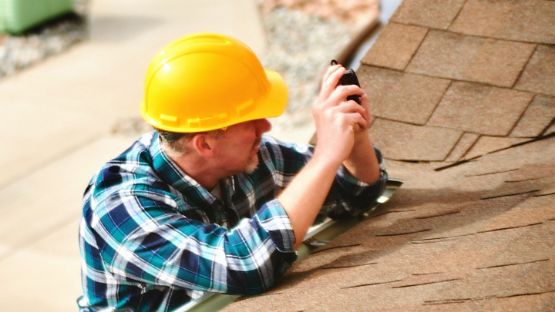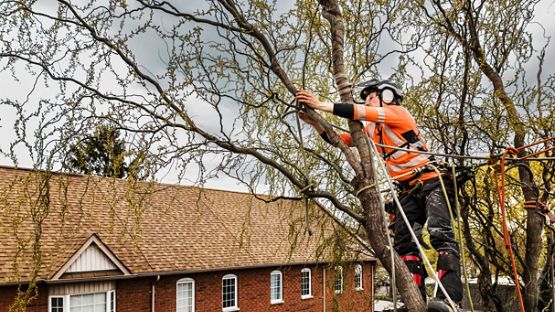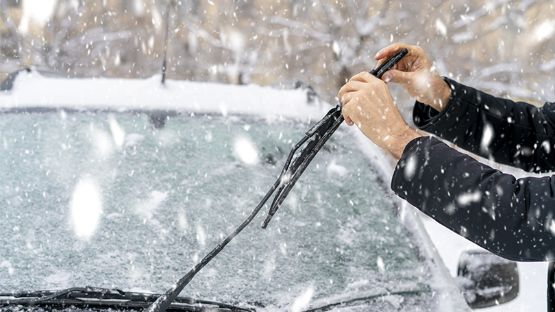Every year, many Canadian homeowners deal with the aftermath of wind damage, from torn-off roofs and broken windows to toppled trees and downed power lines. The combination of unpredictable weather patterns and increasingly intense storms makes it important to understand how to protect your home from damage before it happens.
Whether you’re facing high winds from an oncoming system or preparing for unpredictable windstorms, knowing how to reinforce your home can save you money, stress, and heartache. In this guide, we’ll walk through long-term severe weather preparation strategies and quick emergency measures to help you respond confidently when the wind picks up.
Key takeaways
- Regular maintenance and structural reinforcements can help your home withstand winds.
- Securing outdoor items is just as important as strengthening your home's structure.
- Early preparation before storm season can prevent thousands in potential damage.
- Proper documentation is crucial for insurance claims after wind-related incidents.
Understanding the risk of high winds
Not all windstorms are created equal. Different types of wind events pose varying levels of threat to your home. Thunderstorm downbursts can produce severe storms with straight-line winds exceeding 90 km/h. In coastal areas, cyclonic systems bring sustained high winds that can last for days. Even in urban environments, wind tunneling between buildings can amplify wind speed to dangerous levels.
The impacts of these events are substantial. When winds reach 90-110 km/h, they can cause moderate damage to homes. Once speeds exceed 120 km/h, property damage becomes severe and widespread. At this level, even well-constructed homes can suffer structural failures.
Types of damage caused by wind
Wind affects your home in complex ways. As gusts flow around your house, they create pressure differentials that stress structural elements. The damage typically progresses in stages:
- Initial impact: At lower speeds (60-90 km/h), wind can loosen shingles and damage the soffit. Flying debris may break windows.
- Progressive damage: As winds intensify, the initial breaches allow pressure to build inside the home. This internal pressure, combined with external forces, can cause more serious damage to walls and support systems.
- Structural failure: In extreme cases, the combination of heavy rain and sustained winds can compromise structural integrity, leading to partial or even complete collapses.
The more common scenarios include:
- Roof damage from lifted shingles that exposes the underlayment to moisture
- Broken windows from windborne projectiles cause interior water damage
- Fallen trees damaging rooflines, walls, or power lines
- Detached siding or fascia boards create entry points for water
Even moderate damage, if left unaddressed, can develop into extensive problems that compromise your home's safety and value.
Protecting your home from straight-line winds
Straight-line winds deserve special attention because they can catch homeowners unprepared. Unlike hurricanes, which usually come with days of warning, these violent downdrafts can develop rapidly during thunderstorms.
What makes straight-line winds particularly dangerous is their focused power and the timeline of unexpected events. While hurricanes distribute force over large areas, straight-line winds concentrate destructive energy in narrow corridors. They can topple power lines and create dangerous conditions with little warning.
To protect against these events:
● Install lightning rods if your area is prone to thunderstorms
● Consider underground utilities where possible
● Maintain clear communication channels for emergency alerts
● Develop a family emergency plan with designated shelter areas
Five steps to take to prevent wind damage
Preventing wind damage requires a combination of structural improvements, regular maintenance, and tactical preparations. The following measures will help your home withstand winds that might otherwise cause severe damage:
1. Install storm shutters
Storm shutters provide crucial protection for one of your home's most vulnerable features: windows. Beyond preventing broken glass, they help maintain structural integrity by keeping wind pressure from building inside your home.
When considering installing storm shutters, factor in your region's specific risks. For coastal areas with frequent storms, permanent systems may be worth the investment. For areas with occasional severe weather, temporary panel systems might suffice.
Professional installation ensures proper anchoring to the building structure rather than just the window frames, which is important for performance during extreme conditions.
2. Inspect and reinforce roofing materials
Your roof takes the brunt of wind storms and requires special attention. Today's roofing materials vary significantly in their wind resistance.
Regardless of the material, proper installation techniques make all the difference. Have your roof professionally inspected before storm season, particularly if it's more than 10 years old or has already weathered major storms.
3. Reinforce your garage doors for strong winds
Garage doors represent the largest opening in your home and often the weakest link during windy conditions. When garage doors fail, the resulting pressure changes can literally blow your roof off. To strengthen them:
- Install a bracing kit that secures the door to the floor, tracks, and walls
- Upgrade to a wind-rated door (many areas now require doors rated for at least 225 km/h)
- Ensure tracks and rollers are maintained and lubricated to prevent jamming during heavy winds
Maintenance should include tightening hardware every spring and fall, as the constant vibration can loosen critical connections over time.
4. Secure outdoor items to prepare for storms
During severe weather, ordinary objects become dangerous projectiles. Creating a secure environment around your home is important:
Items requiring attention:
- Patio furniture and outdoor furniture (tables, chairs, umbrellas)
- Grills and cooking equipment
- Planters and decorative items
- Garden tools and equipment
- Children's toys and play equipment
- Garbage and recycling bins
For seasonal preparations, consider:
- Installing ground anchors for larger furniture pieces
- Creating dedicated storage areas for smaller items
- Using heavy-duty straps or cables to secure larger equipment
- Reinforcing fence posts with concrete footings
- Installing hooks or cabinets for quick pre-storm storage
When a storm approaches with little notice, prioritize moving smaller items indoors while securing larger pieces with ratchet straps or bungee cords.
5. Landscaping tips to prevent wind damage
Your yard's design significantly impacts your home's wind vulnerability. Strategic landscaping can reduce risk while enhancing your property's beauty and value.
Tree management:
- Regularly trim trees, especially branches hanging over rooflines or near windows.
- Remove dead trees promptly, as their compromised root systems and brittle branches pose serious hazards.
- Consider the mature size when planting new trees, keeping large trees at least six metres from structures.
- Choose wind-resistant native species adapted to local conditions.
Beyond trees:
- Install windbreaks of staggered plantings to diffuse wind force.
- Use gravel or mulch rather than lightweight bark that can become projectiles.
- Consider the aerodynamics of fencing (solid fences catch more wind than those with gaps).
Professional arborists can help identify hazardous situations and recommend appropriate solutions before storm season arrives.
Special considerations for mobile homes to stay safe
Mobile homes face unique challenges during high winds due to their construction and elevation. If you live in a manufactured home, these specialized precautions can make a crucial difference:
- Install tie-downs and verify they meet current standards (recommendations have strengthened over time)
- Reinforce connections between the home and its foundation
- Create a dedicated storm plan, identifying a small interior room for shelter
- Maintain an enhanced emergency kit, including a first aid kit, water, and communication devices
Many communities with mobile homes offer storm shelters. Know their location and access procedures before emergency situations arise.
Insurance considerations: What to do after experiencing wind damage
Even with thorough preparation, severe storms can sometimes overcome defences. Knowing how to respond after wind damage occurs can streamline recovery:
- Safety first: Before assessing damage, ensure no downed power lines or structural hazards exist.
- Document everything: Take photos and videos before making any repairs.
- Make emergency repairs: Cover broken windows or damaged roofs to prevent further damage.
- Contact your insurance representative: Report the damage to your insurance company promptly with your documentation ready.
- Get multiple repair estimates: This helps verify that costs are reasonable.
Many policies have specific clauses regarding wind damage. Review your coverage annually, especially before storm seasons. Consider additional riders if you live in high-risk areas.
Understanding your deductible structure is particularly important. Some policies have separate deductibles for wind events that differ from standard coverage.
Conclusion: Weathering the storm with confidence
While we can't control the weather, we can certainly prepare for it. The steps outlined above will help prevent wind damage through a combination of structural improvements, regular maintenance, and emergency planning.
Remember that preparation isn't a one-time event but an ongoing process. Each season brings different risks and requires different preparations. By developing comprehensive protection strategies, you'll be better equipped to handle severe weather and unexpected events when they arrive.
Most importantly, never risk personal safety for property protection. With proper planning, you can protect both your family and your home when the winds begin to howl.
For any questions about your home insurance policy or coverage options, please reach out to your insurance representative.













